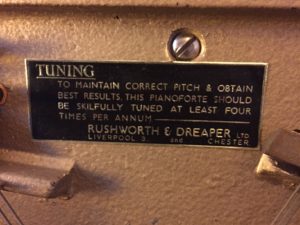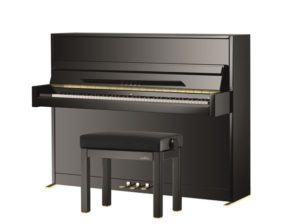Each morning as I leave my Sheffield home for a day of piano tuning, I have to pack my car with everything I need. This usually involves a case of piano tuning and repairing tools, but also many spare actions parts that can be used for repairs. In the winter when it snows and I can’t get my car off the drive for piano tuning, I sometimes work locally in Sheffield by walking to each job if it’s close enough. In these instances I can use a few essentials:
- My Fujan Carbon Piano Tuning Hammer – the worlds most advanced tuning hammer that allows me to feel every little movement in the wrest pins (or tuning pins) as they turn. Piano tuning became much easier for me when I began using this around 2017 or 2018.
- My Keyes Impact Tuning Hammer – another excellent tuning hammer, this one uses a weight to move the tuning pins. I’m slowly introducing more of this hammer into my tunings as its much easier on the wrists and elbows, and moves the wrest pin deeper in the wrest plank (better stability than one could manage with a regular piano tuning hammer)
- A variety of screwdrivers for tightening or loosening loose screws in the action, or for removing broken action parts
- PTFE – both powdered and liquid for lubricating various felts in the piano action and piano keys. Or can be used to fix squeaky pedals and the like.
- Two mutes for muting the strings – piano tuning is achieved by tuning the middle strings in equal temperament and then tuning the adjacent strings in unison with its neighbor.
- A bag of jack springs – a very common issue for notes jamming is that the jack springs have lost tensions (particularly true if the piano is older than 50 years)
- Several types of glue (different glue for different needs)
- A variety of washers – these are needed to set the key height for an even touch and the best play-ability
- A set off regulating tool – another very common problem with pianos. If the note is dead, the hammers bobble against the strings or the hammer won’t repeat properly there’s most likely an issue with how the set-off buttons are regulated
- A pair of pliers – many, many different uses in regulating a piano
Many piano tuning and repair jobs could be achieved with just these essentials, although I’m always glad to have much more than this backed up in the car and at home.





